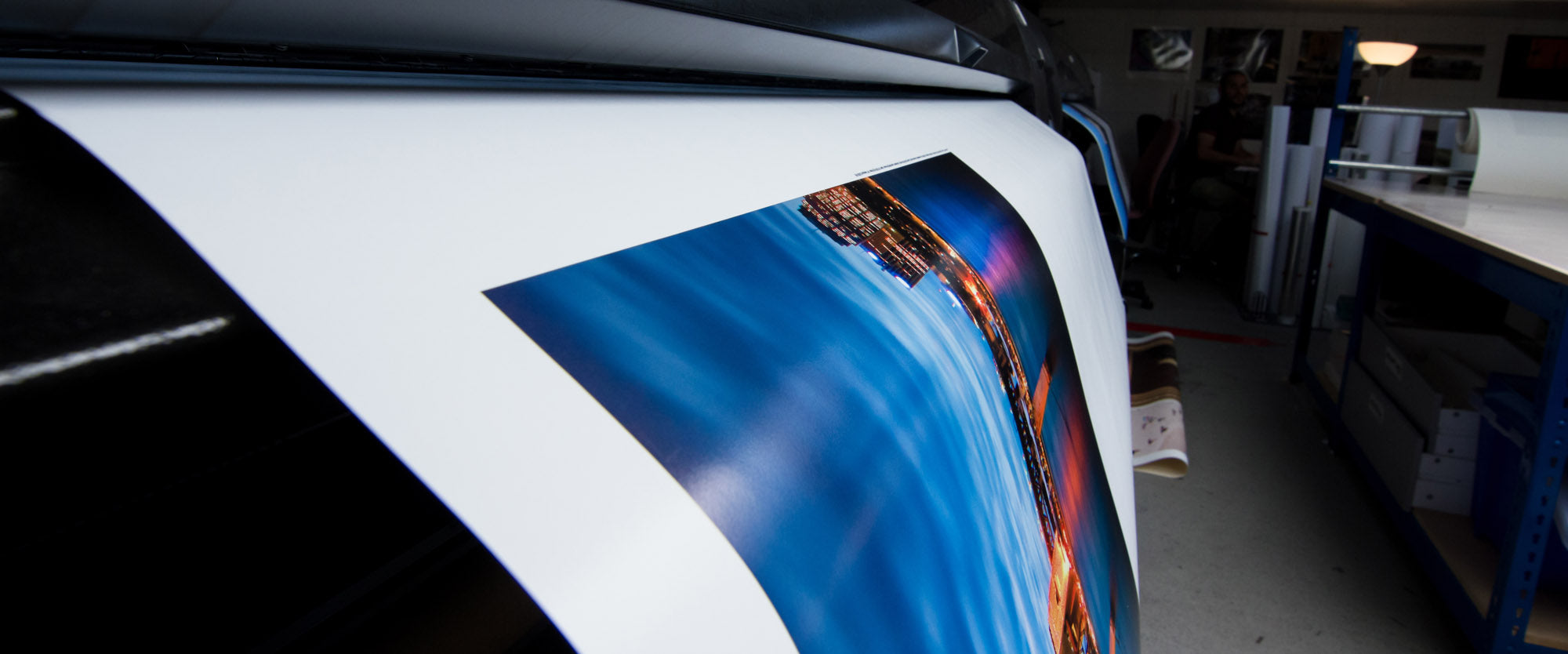Exploring the Art of Printing Photos on Canvas
- The History of Printing Photos on Canvas
- Choosing the Right Photo for Canvas Printing
- Understanding Different Canvas Printing Techniques
- How to Properly Prepare Your Photo for Canvas Printing
- Tips for Displaying and Caring for Your Canvas Prints
Are you looking to transform your favourite photographs into stunning artworks? Look no further than the art of printing photos on canvas. At Print Panoramics, we believe that turning your cherished memories into beautiful canvas prints is a unique and creative way to showcase your personal style and add a touch of elegance to any space. With our comprehensive guide on canvas printing, we invite you to discover the endless possibilities and explore this popular art form that has taken the world by storm.
In today's digital age, where most of our cherished memories are stored in pixels on our devices, print photos on canvas provides a tangible and timeless way to preserve those special moments. Whether it's a breathtaking landscape, a candid family portrait, or a candid snapshot of your furry friend, transforming your photo to canvas prints brings them to life in a way that no digital screen can match.
With canvas printing, your images are professionally reproduced on high-quality canvas material, resulting in vibrant colours, sharp details, and a textured finish that adds depth and dimension to your prints. The combination of archival-grade inks and durable canvas ensures that your photographs will not only look stunning but also stand the test of time, allowing you to enjoy them for years to come.
But print on canvas is not just about preserving memories; they are a form of art in themselves. With their ability to add a personalised touch to any space, canvas prints have become increasingly popular among interior designers and art enthusiasts alike. The versatility of canvas as a medium allows for limitless creative possibilities, ranging from large-scale statement pieces to a collection of smaller prints curated on a gallery wall.
Canvas prints are not limited to traditional photographs either. They offer endless possibilities for artistic expression, including illustrations, paintings, and graphic designs. By printing these artworks on canvas, you can transform them into gallery-worthy pieces that you can proudly display in your home, office, or even gift to your loved ones on special occasions.
At Print Panoramics, we understand the importance of finding the right printing service to bring your visions to life. That's why we offer a wide range of customisation options to ensure that your print on canvas is a true reflection of your style and preferences. From selecting the size and orientation of your prints to choosing the frame styles and edge options, we empower you to create a unique piece of art that perfectly complements your aesthetic sensibility.
In addition to the customisation options, we also provide guidance and assistance every step of the way. Our online guide is designed to demystify the process of canvas printing, providing you with useful information and tips to help you make informed decisions about your prints. Whether you're a seasoned photographer or a beginner looking to delve into the world of canvas printing, our guide covers everything from selecting the right image resolution to understanding the different types of canvas materials and finishes available.
So why settle for simply storing your precious memories on a hard drive or social media platform when you can bring them to life in the form of stunning custom canvas prints? Step into the world of canvas printing, and unlock your creativity by transforming your favorite photographs into personalised works of art. With our canvas and float framed canvas options and comprehensive guide, the possibilities are endless, and the results are sure to leave you captivated.
The History of Printing Photos on Canvas
The practice of printing photos on canvas has a rich history that dates back to ancient times. Over the centuries, artists and photographers have continuously experimented with different techniques to capture and preserve their images on this versatile fabric. Here, we will explore the fascinating journey of photo to canvas, from its early beginnings to the present day.
Early Beginnings
The concept of print on canvas can be traced back to the ancient Romans and Egyptians, who used canvas as a medium for painting and other artistic endeavors. However, it wasn't until the 13th century that canvas became popular in Europe for oil painting. Canvas was preferred over other materials due to its durability and flexibility, which allowed artists to create large-scale paintings.
Advancements in Technology
With the advent of photography in the 19th century, new methods were developed to transfer photographic images onto canvas surfaces. Initially, the process involved coating the canvas with light-sensitive chemicals and exposing it to the subject. This method, known as the collodion process, required long exposure times and specialised equipment.
In the early 20th century, the introduction of roll film and colour photography revolutionised the printing industry. This led to the development of new techniques for printing photo to canvas. The use of chemical processes evolved, allowing for more efficient and accurate reproduction of images.
Modern Techniques
The digital era brought about significant advancements in the art of print photos on canvas. With the rise of digital photography and image editing software, it became easier to manipulate and enhance photographs before printing them onto canvas.
Today, the most common method of print on canvas involves using inkjet printers. These printers use high-quality pigmented inks that are fade-resistant and produce vibrant colours. The canvas is stretched tightly over a wooden frame, creating a visually appealing and durable piece of art.
Popularity and Accessibility
In recent years, photo to canvas has gained immense popularity among photographers, artists, and individuals looking to display their memories in a unique and artistic way. The affordability of custom canvas prints, along with their ability to add a touch of sophistication to any space, has made them a favored option for home and office décor.
Thanks to advancements in technology and the accessibility of online printing services, individuals can easily upload their photos and have them printed on canvas with a few clicks. This convenience has made it possible for anyone to enjoy the beauty and uniqueness of canvas prints.
Conclusion
The history of print photos on canvas is a testament to the evolution of both technology and artistic expression. From ancient civilizations to the digital age, artists and photographers have continually sought innovative ways to showcase their images on this versatile medium. Today, custom canvas prints continue to be a popular choice for preserving and displaying cherished memories, creating a lasting legacy for generations to come.
Choosing the Right Photo for Canvas Printing
When it comes to printing photos on canvas, selecting the right image is crucial. After all, the photo you choose will be transformed into an art piece that you can proudly display in your home or office. Here are some factors to consider when choosing the perfect photo for canvas printing:
- Resolution: The resolution of the image is essential for a high-quality canvas print. Opt for images that have a high resolution, preferably 150-300 DPI (dots per inch). This ensures that the details of the photo are crisp and clear when enlarged on the canvas.
- Composition: A well-composed photo makes for a visually appealing canvas print. Look for images with a strong focal point, balanced elements, and a pleasing arrangement. Consider the rule of thirds, leading lines, and other composition techniques to create an aesthetically pleasing image.
- Colours and Contrast: Vibrant colours and a good contrast can make a canvas print visually striking. Choose photos with a wide range of colours and tones to add depth and dimension to your canvas. Experiment with different colour palettes to create the desired mood and atmosphere.
- Subject Matter: The subject matter of the photo should resonate with you and suit your preferences. Whether it's a stunning landscape, a cherished family portrait, or a captivating abstract composition, select an image that speaks to you personally. This will make the canvas print more meaningful and engaging.
- Focus and Clarity: Ensure that the photo you choose is sharp and in focus. Blurry or out-of-focus images may not translate well onto canvas, causing details to appear unclear or distorted. Take the time to review your photos and select one with good clarity and sharpness.
- Aspect Ratio: Consider the aspect ratio of the photo and compare it to the canvas size you intend to print. You may need to crop or resize the image to fit the canvas dimensions properly. Keep in mind that some cropping may be necessary to maintain the desired composition and focal point.
- Emotional Connection: Lastly, choose a photo that evokes a positive emotional response. Whether it's a fond memory, a beautiful location, or a special moment captured in time, selecting an image that elicits emotions will make your custom canvas prints more meaningful and memorable.
Taking these factors into account will help you select the right photo for canvas printing. Remember, it's about creating a piece of art that you will love and cherish for years to come. So take your time, explore your collections of canvas prints, and choose the image that truly speaks to you.
Canvas prints can transform your cherished photos into beautiful works of art. Follow our guide to explore more about the art of printing photos on canvas.
Understanding Different Canvas Printing Techniques
When it comes to printing photos on canvas, there are several techniques to consider. Each technique offers its own unique advantages and can create different effects, so it's important to understand the options available. In this section, we will explore some of the most common canvas printing techniques and how they can enhance your artwork or photographs.
- Digital Printing:
Digital printing is the most common technique used for printing photos on canvas. It involves using a digital printer to directly transfer an image onto the canvas. This technique allows for precise and detailed reproduction of the original image, resulting in vibrant colors and sharp details. With digital printing, you have the flexibility to print any size of canvas, ranging from small prints to large-scale artworks.
- Giclée Printing:
Giclée printing is a high-quality printing technique widely used in the art world for reproducing fine art photographs. It involves using archival inks and fine art paper or canvas to create long-lasting prints with exceptional colour accuracy and detail. Giclée printing is particularly popular for printing large-scale artworks or limited edition prints due to its ability to capture the nuances of the original artwork.
- Dye Sublimation:
Dye sublimation printing is a unique technique that involves transferring ink onto a specially coated substrate, such as canvas, using heat and pressure. This technique allows the ink to penetrate the fibers of the canvas, resulting in vibrant colours and excellent durability. Dye sublimation printing is especially suitable for outdoor or high-traffic areas as the prints are resistant to fading and damage from sunlight or moisture.
- Hand Brushing:
Hand brushing is a technique that involves applying paint or ink onto the canvas by hand. This technique can add texture, depth, and a painterly quality to the printed image. Hand brushing is often used to create a more artistic and personalised look, mimicking the appearance of a painted artwork. It is a popular choice for those looking to add a unique touch to their canvas prints.
- Collage Printing:
Collage printing is a creative technique that involves printing multiple images on a single canvas to create a collage effect. This technique allows you to combine different photos, colours, and patterns to tell a visual story or create a visually engaging piece of art. Collage printing offers endless possibilities for customisation and can be a great way to display a collection of your favourite photographs.
By understanding the different canvas printing techniques available, you can choose the one that best suits your artistic vision and desired outcome. Whether you prefer the precision of digital printing, the artistic touch of hand brushing, or the versatile options of collage printing, each technique offers its own unique advantages. Experimenting with different techniques can help you create stunning and personalised canvas prints that truly reflect your style and creativity.
How to Properly Prepare Your Photo for Canvas Printing
When it comes to printing your photos on canvas, proper preparation is key to achieving the best results. By following a few simple steps, you can ensure that your image is well-suited for canvas printing and that the final product turns out just the way you envision it. Here are some guidelines to help you prepare your photo for canvas printing:
- Select the Right Image: Choose a high-resolution photograph that is well-composed and has good lighting. A high-resolution image will ensure that your canvas print comes out sharp and detailed, while good composition and lighting will enhance the overall visual impact.
- Size and Resolution: Determine the desired size of your canvas print and make sure your image is of sufficient resolution to accommodate that size. For optimal printing quality, it is recommended to have a resolution of at least 150 DPI (dots per inch). This will prevent any loss of detail or pixelation when enlarging the image for canvas printing.
- Edit and Enhance: Before sending your photo for canvas printing, consider editing and enhancing it using photo editing software. Adjust the brightness, contrast, and colour saturation as needed to achieve the desired look. However, be cautious not to overdo the editing, as it may result in an unnatural appearance.
- Format and File Type: Save your image in a suitable format for printing, such as JPEG, PNG or TIFF. These formats preserve the image quality while keeping the file size manageable. Additionally, ensure that your image is in the RGB color space, as this is the standard for most printing processes.
- Consider Bleed and Wrap: When preparing your photo for canvas printing, keep in mind that some of the image may be wrapped around the frame. To ensure that no important details are lost during the wrapping process, consider allowing for a bleed area by extending the edges of your photo beyond the visible area of the canvas or by choosing a coloured edge or a mirror edge to ensure no loss from an image wrap.
- Proofing and Test Prints: Before committing to a large canvas print, it is advisable to request a test print or proof. This will allow you to review the colours, sharpness, and overall quality of the print. By carefully examining the proof, you can make any necessary adjustments before proceeding with the final print.
- Trust the Professionals: Printing photos on canvas can be a complex process, requiring specialised equipment and skills. To achieve the best results, it is recommended to rely on professional printing services that specialise in canvas prints. They have the expertise and technology to ensure that your image is reproduced on canvas with accuracy and sharpness.
By following these guidelines, you can properly prepare your photo for canvas printing and ensure that the final product is a true work of art. Take the time to select the right image, optimise its resolution and quality, and trust the professionals to bring your vision to life on canvas.
Tips for Displaying and Caring for Your Canvas Prints
When it comes to displaying and caring for your custom canvas prints, there are a few important considerations to keep in mind. Whether you're showcasing these artworks in your home, office, or gallery, following these tips will help preserve their beauty and longevity.
- Choosing the Right Location: Selecting the right spot to hang your canvas prints is crucial. Avoid placing them in direct sunlight or areas prone to high humidity, as these conditions can cause fading and deterioration over time. Opt for a wall with indirect light and stable temperature and humidity levels for optimal preservation.
- Hanging Methods: Depending on the size and weight of the canvas prints, you have a few options for hanging. The easiest and most simple method is simply hanging the top inner edge of the canvas frame directly onto screws in the wall. Another popular choice is to use picture hooks or hangimg kits, which provide sturdy support without damaging the walls too much. Another option is to use adhesive wall strips specifically designed for hanging artwork, which are easy to apply and remove without leaving any residue.
- Avoid Moisture and Heat: Moisture and heat can be detrimental to the longevity of your canvas prints. Keep them away from areas like the bathrooms which get very wet or in areas of the kitchen where humidity levels tend to be high. Additionally, avoid exposing them to direct heat sources such as radiators or fireplaces, as extreme temperatures can cause warping or cracking.
- Regular Dusting and Cleaning: Dust and dirt can accumulate on the surface of canvas prints over time, affecting their appearance. To keep them looking their best, gently dust the surface with a soft, lint-free cloth or use a small brush specifically designed for cleaning artwork. Avoid using water or harsh cleaning agents, as they can damage the print.
- Avoid Touching the Surface: To maintain the integrity of the canvas print, it's important to avoid touching the surface with bare hands. Natural oils and moisture on our skin can leave marks or smudges on the print. If you need to handle the artwork, we recommend wearing clean, lint-free gloves to protect it from any potential damage.
- Avoid Environmental Hazards: Be mindful of potential hazards that could harm your canvas prints, such as pets, smoke, or airborne pollutants. Keep them away from areas where they might be at risk of accidental damage, and consider covering them with a protective sheet when not on display to prevent exposure to dust or other environmental factors.
- Regular Inspections: Periodically inspect your canvas prints for any signs of damage, such as peeling, cracking, or discoloration. Catching any issues early on can help prevent further deterioration and allow for prompt repairs if needed. If you notice any problems, consult a professional conservator who specialises in artwork restoration.
- Proper Storage: If you need to store your canvas prints for an extended period, it's important to do so correctly. Make sure they are clean and dry before carefully rolling them with the printed side facing inwards. Store them in acid-free tissue paper or archival boxes in a cool, dry place to protect them from environmental factors.
By following these tips, you can ensure that your canvas prints remain in excellent condition and preserve their beauty for years to come. Displaying them in the right location, handling them with care, and maintaining a clean environment will help you enjoy your art collection for a lifetime.
 |
 |
 |
|---|---|---|
| Canvas Print - Non Panoramic | Panoramic Canvas Print | Ultra Panoramic Canvas Print |
| GBP 37.0 ~ GBP 367.0 | GBP 69.0 ~ GBP 249.0 | GBP 87.0 ~ GBP 199.0 |
| View Product | View Product | View Product |






